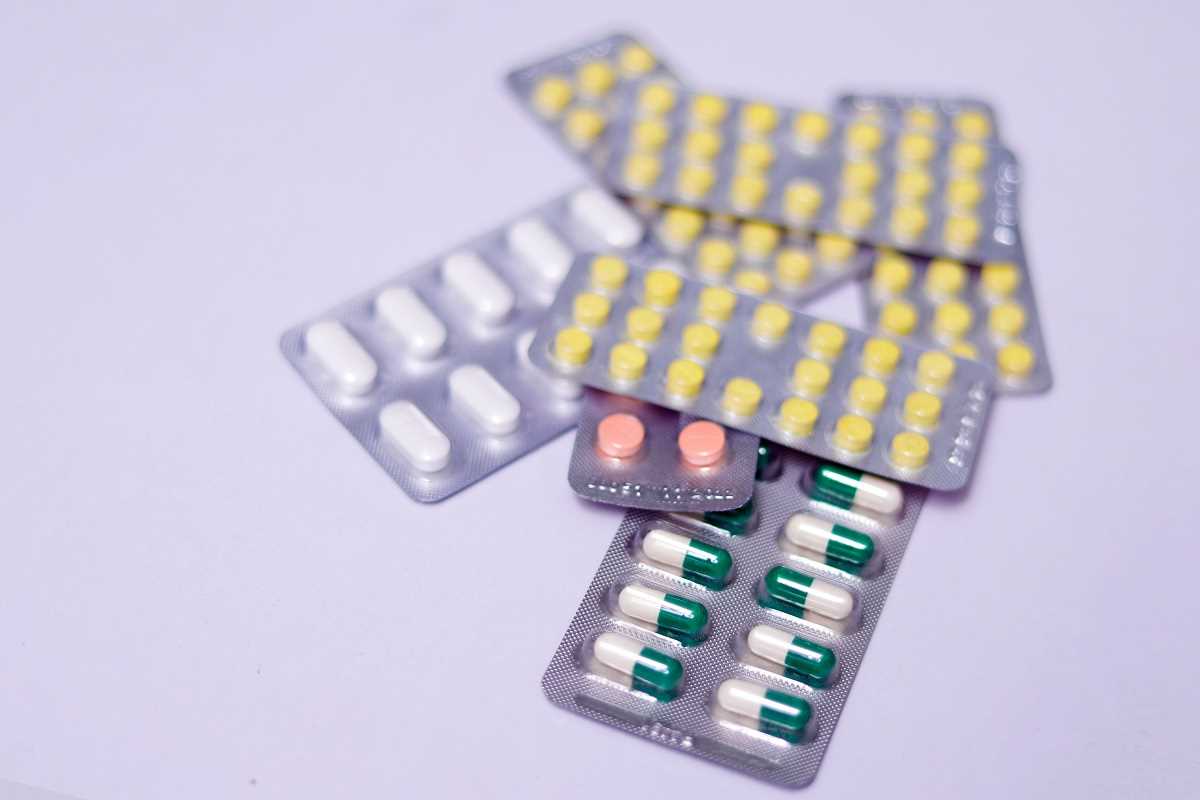Your medicine cabinet might seem like the obvious place to store your prescriptions, but here's a surprising truth: it's actually one of the worst spots in your home for medication storage! If you're like most people managing multiple prescriptions, you've probably never given much thought to where and how you store your medications. Yet proper storage can mean the difference between a drug that works effectively and one that's lost its potency or, worse, become potentially harmful.
Understanding how to store your medications correctly isn't just about following instructions—it's about protecting your health investment and ensuring you get the full benefit from every prescription. Let's explore the essential storage principles that will keep your medications safe, effective, and ready to do their job when you need them most.
Why Proper Storage Matters More Than You Think
Medications are carefully formulated chemical compounds designed to remain stable under specific conditions. When exposed to improper storage environments, these compounds can break down, lose effectiveness, or even develop harmful byproducts. Think of your prescription medications as you would fresh produce—they need the right environment to maintain their quality and safety.
The consequences of improper storage extend beyond reduced effectiveness. Heat, moisture, and light can trigger chemical reactions that create toxic compounds or render your medication completely useless. For someone managing conditions like high blood pressure, diabetes, or heart disease, taking a degraded medication isn't just ineffective—it can be genuinely dangerous.
Consider this: pharmaceutical companies spend millions ensuring their products remain stable from manufacturing to your pharmacy. Once you take that medication home, you become the final guardian of its integrity. The storage decisions you make directly impact whether you're getting the therapeutic benefit your doctor prescribed.
The Bathroom Medicine Cabinet Myth
Let's address the most common storage mistake right away: storing medications in the bathroom medicine cabinet. This convenient location seems logical, but bathrooms are actually medication storage nightmares. Every time you shower or run hot water, you create a humid, temperature-fluctuating environment that accelerates medication degradation.
The steam from your daily shower can reach medications stored in bathroom cabinets, introducing moisture that breaks down tablets, capsules, and liquid formulations. Temperature swings from hot showers followed by cooler periods create an unstable environment that pharmaceutical companies never intended for their products.
Instead of the bathroom, choose a bedroom dresser drawer, a kitchen cabinet away from the stove and sink, or a dedicated storage box in a climate-controlled area of your home. These locations provide the stable, dry environment your medications need to maintain their effectiveness.
Temperature Control: Finding the Sweet Spot
Most medications perform best at room temperature, typically defined as 68-77°F (20-25°C). This range provides stability without requiring special storage equipment. However, many people unknowingly subject their medications to temperature extremes that compromise their effectiveness.
Avoid storing medications near heat sources like radiators, heating vents, or sunny windowsills. Similarly, don't leave medications in cars, where temperatures can soar to dangerous levels or drop below freezing. Your glove compartment might seem convenient for medications you take while traveling, but temperature fluctuations can quickly degrade your prescriptions.
For medications that require refrigeration, use the main body of your refrigerator rather than door compartments, which experience more temperature variation when the door opens and closes. Keep refrigerated medications in their original containers and never freeze them unless specifically directed to do so.
Create a dedicated medication storage area in your home where temperatures remain consistently comfortable. A bedroom dresser drawer or a cabinet in a climate-controlled area works perfectly for most prescriptions.
Moisture: The Silent Medication Destroyer
Humidity is one of the most destructive forces affecting medication stability. Moisture can cause tablets to crumble, capsules to stick together, and liquid medications to grow bacteria or mold. Even medications in supposedly sealed containers can be affected by ambient humidity levels.
Silica gel packets—those little pouches you find in vitamin bottles—are there for good reason. They absorb moisture that could otherwise damage your medications. Keep these packets in your medication bottles, and consider adding food-grade silica gel packets to storage areas if you live in a particularly humid climate.
Never store medications in areas prone to moisture exposure, such as laundry rooms, basements, or near kitchen sinks. If you live in a humid climate, consider using a dehumidifier in your medication storage area or investing in airtight storage containers designed specifically for medications.
Watch for signs of moisture damage: tablets that crumble easily, capsules that stick together, or any visible moisture inside medication bottles. These are clear indicators that your storage environment needs improvement.
Light Protection: Keeping Your Medications in the Dark
Many medications are light-sensitive, breaking down when exposed to direct sunlight or even bright indoor lighting. This is why most prescription bottles are made from amber-colored plastic—it filters out harmful UV rays that could degrade your medications.
Store your medications in their original containers whenever possible. These containers are specifically designed to protect against light exposure while providing proper identification and dosing information. Clear plastic pill organizers, while convenient for daily management, don't offer the same light protection as original pharmacy bottles.
If you must use a pill organizer, choose one made from opaque materials and store it in a dark location. For medications that come in clear containers, wrap them in aluminum foil or store them in a dark drawer to provide additional light protection.
Avoid leaving medications on countertops, windowsills, or anywhere they might be exposed to direct sunlight. Even brief exposure to intense light can begin the degradation process for sensitive formulations.
Child Safety: Protecting Young Family Members
Proper storage isn't just about maintaining medication effectiveness—it's also about keeping dangerous substances away from children and pets. Every year, thousands of children are hospitalized due to accidental medication ingestion, making secure storage a critical safety concern.
Use child-resistant caps consistently, even if they're inconvenient. These caps are designed to slow down curious children, giving you time to intervene. However, remember that child-resistant doesn't mean child-proof—determined children can sometimes overcome these barriers.
Store all medications in high cabinets or locked boxes, well out of reach of children. Even seemingly harmless medications like vitamins can be dangerous in large quantities. Consider installing safety latches on cabinets where you store medications as an additional protective measure.
Keep medications in their original containers with clear labeling. This helps prevent accidental mix-ups and ensures that poison control centers have accurate information in case of emergency. Never transfer medications to unmarked containers or food packaging, which could lead to dangerous confusion.
Special Storage Considerations for Different Medications
Some medications require unique storage approaches beyond standard room temperature, dry conditions. Insulin, for example, should be refrigerated before opening but can be stored at room temperature for up to 28 days once in use. Nitroglycerin tablets must be kept in their original glass container to maintain effectiveness.
Liquid medications often require refrigeration and have shorter expiration periods once opened. Always check the pharmacy label for specific storage instructions, and set reminders for medications that expire quickly after opening.
Suppositories and other temperature-sensitive formulations may soften or melt if stored improperly. These medications often require refrigeration or storage in consistently cool areas to maintain their shape and effectiveness.
Inhaler medications can be affected by temperature extremes, potentially altering the amount of medication delivered with each puff. Store inhalers at room temperature and never leave them in hot cars or freezing conditions.
Managing Expired and Unused Medications
Properly disposing of expired and unused medications is just as important as proper storage. Expired medications can lose effectiveness or, in rare cases, become toxic. Don't take chances with your health by using medications past their expiration dates.
Most communities offer medication take-back programs through police departments, pharmacies, or special collection events. These programs ensure medications are disposed of safely without entering the water supply or falling into the wrong hands.
If take-back programs aren't available in your area, the FDA recommends mixing most medications with unpalatable substances like coffee grounds or cat litter before throwing them in the trash. Remove or black out personal information from prescription labels before disposal.
However, some medications are considered so dangerous that they should be flushed immediately when no longer needed. The FDA maintains a specific list of these medications, which includes certain opioids and other controlled substances that could be lethal if accidentally consumed.
Creating Your Ideal Medication Storage System
Develop a systematic approach to medication storage that works for your lifestyle and living situation. Designate a specific area of your home as your medication storage zone—somewhere cool, dry, and away from direct light. This might be a bedroom dresser drawer, a kitchen cabinet away from the stove, or a dedicated medication storage box.
Use a simple inventory system to track expiration dates and ensure you're using medications before they lose effectiveness. A small notebook or smartphone app can help you monitor when medications need to be replaced or when it's time to refill prescriptions.
Consider investing in a medication storage box with individual compartments for different prescriptions. These boxes can help organize your medications while protecting them from environmental factors that could cause degradation.
Disclaimer: The content provided on SuperHealthyTips is for informational and educational purposes only. This information is not intended to be a substitute for professional medical advice, diagnosis, or treatment.
 (Image via
(Image via.jpg)





